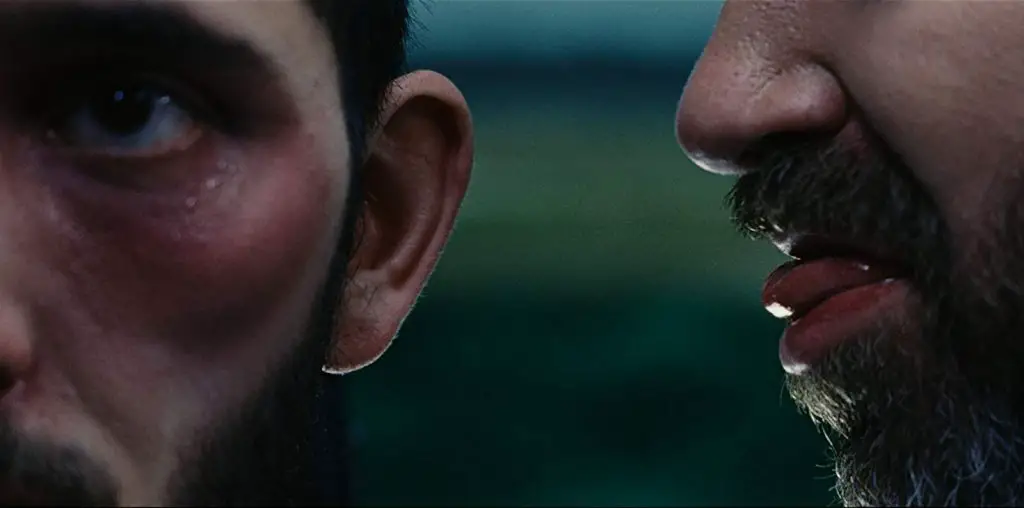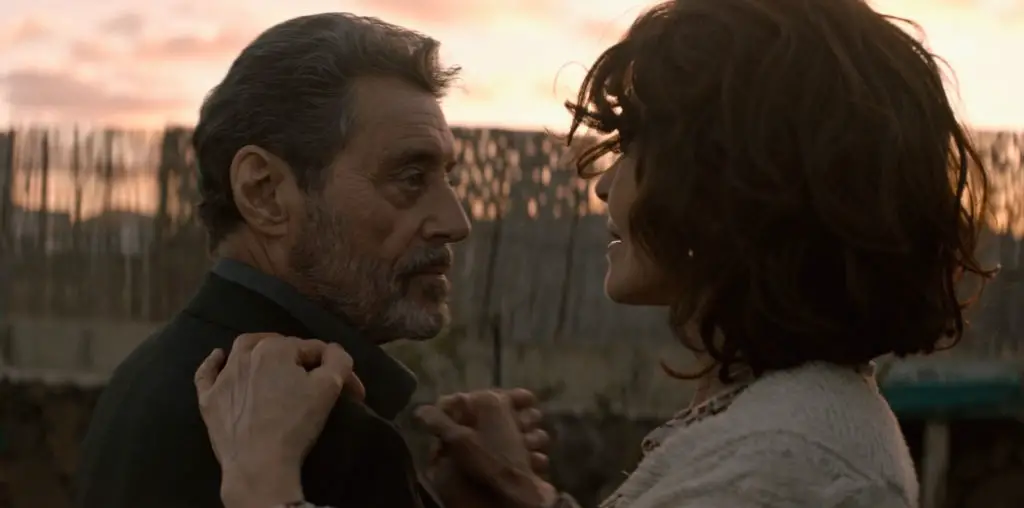
Had a shitty wedding day? Well it couldn’t have been any worse than the one featured in Ron Vignone’s hilarious new movie. With Say I Do, Ron has created a “Planes, Trains and Automobiles” of wedding disasters. It’ll either make you feel better about your own botched wedding, or it will ease your fears about the big day looming in the future. And for those of you who are afraid of the opposite sex, it’ll just make you laugh, okay?
Ron Vignone was kind enough to take some time with us to discuss Say I Do.
How would you describe Say I Do?
Something between a comedy of errors and a train wreck.
The film wasn’t based on any kind of personal experience was it?
How do I laugh in print? I’m having a good laugh right now. As far as the plot goes, no. My wife and I eloped in Hollywood at three o’clock in the morning. As far as Ben and Sydney’s inner journeys are concerned, yes. You could say it’s straight from the annals of a very powerful emotional journey in my life. Definitely straight from the heart.
What made you want to start making films?
Well, I come from an Italian-American family (or American-Italian depending which way you look at it), which basically means you grow up experiencing life as if it were a hallucination. If childhood is at times bizarre and contradictory, for some reason it’s even more so in that context, and you’re on your own to figure it all out. You have to find a way to stay sane from a very early age. So I started making little movies about my experiences, and when people understood them, usually by laughing, I felt better. I guess I’ve managed to make sense of things by making films. But if I were to look back and see if there was one definitive experience, it would have to be when I was five years old and the only kid in the company of six adults on a cruise ship holiday. I was bored out of my mind – and probably an insufferable brat. My uncle, being kind to both me and my parents, took me to the on-board theater to see my first movie, which was “Willy Wonka and the Chocolate Factory.” The whole experience blew me away and the film made a really big impression on me especially because I cried at the end. I dragged my poor uncle (who was an avid storyteller) back to see it five times on that trip. Say I Do is dedicated to him.
Was making Say I Do a positive experience for you?
Absolutely. I feel so lucky to have worked with such talented people from cast to crew, from beginning to end. I can’t say enough about them or my experience. That I can even say that, I feel extremely fortunate. The whole thing’s been made double positive by the way it’s been received. The film has inspired quite a bit of lively discussion – often argument – with audiences siding either with the bride or groom’s point of view. That’s been a very unexpected and pleasant surprise.
What were some of the biggest obstacles you had to overcome in making your film?
Personally, the biggest was letting go of the normal ways and means of control you have in making a film. Outside of story structure, Say I Do is built in great part on improvisation and chaos, which I believe is one of the reasons that it works the way it does. And since the device of the film is a wedding day being filmed, I wanted the experience to be one which you might really believe had unfolded the way it did. This was the factor which many others were based on – improvising the dialogue, shooting with existing light, no blocking, etc. And of course those decisions force you to give up a lot of control – or at least order. I knew this going in, but it’s different when all of a sudden it really counts. But when I truly started working that way, it was thoroughly liberating.
On the level of physical production, the biggest obstacle, believe it or not, was getting a limousine. Just about everybody wanted an extraordinary day rental on them, and then on top of that, it was mandatory that we pay an hourly accompanied driver’s rate. We needed the car for seven days, and five of those were in the Mojave Desert. Usually when they heard that, the whole deal was off anyway. It was looking very dismal right up to a few days before shooting when Tricia Linklater (Producer) found something in Las Vegas. On the first day of shooting, we show up to get it and the guy tells me it was in an accident the previous night and that he doesn’t have another. We inspect the damage and it’s not so bad – a large unattractive dent along the side-runner. Two things come to mind: new plot point and big discount. He gave us an unbelievable deal and we shot a scene around the couple’s discovery of the dent, which got cut in the end to speed up the first act. But this was the spirit in which we made this movie – whatever the world throws at us, we’ll use and see what happens. The weather was another example. After three months of perfect skies, it started raining on the day we started shooting. We thought, OK, this could work for us. But then it really started coming down, and I wanted to postpone the scene where the limo breaks down driving up the mountain road. Joe Forte (Producer and Co-Writer) said to me, “Just go for it and see what happens. How many films have you seen shot in the desert and there’s a rain storm?” It was true. We did it and it worked terrifically for both the story and the performances. It was a great lesson to learn.
How did you go about selecting your cast?
I was doing scene study with Lorinne Vozoff’s theater group in Los Angeles, which is where I met David BelAyche (who plays the Limo Driver). I stayed with this group for a year while I was making a short film (“Snooze”) and as people would come and go from the group, I was always taken back by how many talented actors there really are out there. So I had this belief that I could find the right people for this film by just putting in the time. So I spent about two months seeing showcase after showcase of different theater groups in L.A. Finally, a friend invited me to one at the Beverly Hills Playhouse, which is where I saw Ben Koldyke, who plays the Groom. When he came out on stage, I just knew this was the guy for the part. So I approached him and asked if he would be interested. He liked the idea and was in. I asked him if he knew anybody that fit the role of Sydney, and he introduced me to Pamela. We did an improv in my living room where he surprises her by proposing after a long hike up a sand dune. The energy was palpable and I knew I had my Bride and Groom. I went to David’s house to have a coffee and I was taken back when he opened his door because he had just shaved his head. I knew his tremendous talent after working with him for so long and it was right there I knew he would be the limo driver. Rebecca (Patricia) who was a friend of Pam’s, virtually stalked me for the part and I am grateful she did. Both she and Pam introduced me to Samuel (Michael), who just had a terrific guest appearance on “Seinfeld” that I’d seen and loved, and when he read for the part, it was clear I had my principal cast. It is worth noting that because the four actors from the wedding party knew each other, and didn’t know David, it worked fabulously for the odd-man-out aspect of the relationships.
What are the pluses and minuses of making a film in the middle of the desert?
Well, the first minus is probably the most obvious – no bathrooms. This small inconvenience is exacerbated by formal attire and rising temperature. Without going into detail, let’s just say the cast’s tolerance (with greatest respect for the ladies) was another reason I love these people.
As far as the pluses go, one of the reasons I love the desert so much and why I believe it works so well for the movie is that, unlike the forest or the mountains, there is very little to project yourself on to, meaning, you can’t (or at least I can’t) find an idyllic image of who I am or would like to think I am in that landscape – which invariably forces you to sit with yourself and confront what’s going on inside. That really worked for the journey the characters were making. And of course there is the freedom aspect of making a movie in the desert, which I wouldn’t try to put better than you did in your review of our movie: “…there’s nobody around to f**k with you. You can have your leading actor running around, naked, covered in blood, waving a shotgun in one hand and a rubber chicken in the other and there won’t be anyone there to say s**t.” That’s very true, although watch out for the park ranger if you don’t have a permit.
Is filmmaking something you could do forever?
I’m very happy to be able to say yes to that question. When I started making this movie, all I really had was the idea that I would love to pursue fillmmaking as a career. The reality of the process – the endless problems, compromises, and sacrifices you have to make, and the inherent madness of the whole thing makes you very aware that you better damn well love doing it. Having come through the other side, I feel lucky as hell to say I really do love it. Best damn fun there is, in fact.
Will there be any upcoming screenings of Say I Do?
We are planning an industry screening, and of course hope for lots of festivals.
Any future projects?
Absolutely. Currently I am in Europe and doing some reconnaissance for a fish-out-of water story that very cleverly weaves both the comedy and suspense genres together.

